Catalog Shopping
With my fondness for 1970s era electronics, it occurred to me that I should try and locate some vintage electronics catalogs. Back in the day, catalog shopping was how people got things delivered to their door. My favorite catalogs were those for electronics products, beginning with the Heathkit catalog, which landed my mail box every 4 months or so.
A random search on eBay turned up several items that I remember fondly from my younger years.
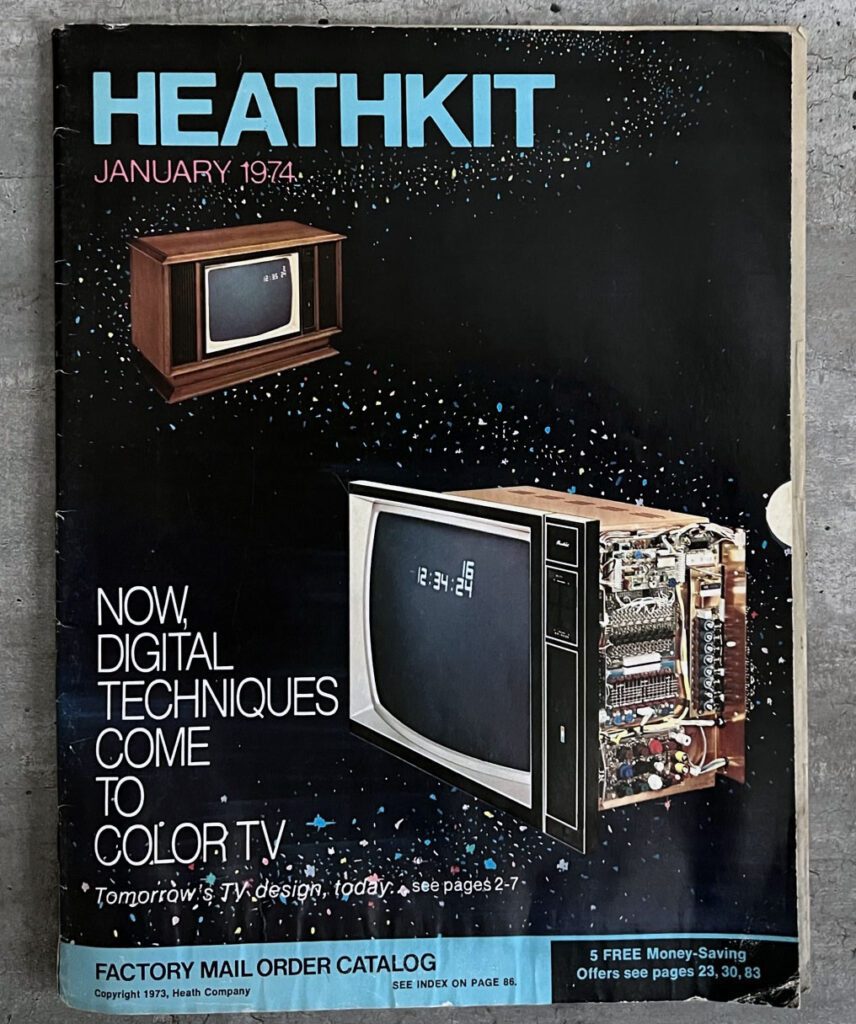
I always wanted to build this television set but the cost was way out of reach. The catalog price was $650, which (according to a web search) is about $3,750 in today’s dollars. It was a complicated project and really pushed the limits of what was possible in a kit. The GR-2000 began shipping in January 1974. It had many innovative features, not the least of which was a very serviceable and innovative chassis.
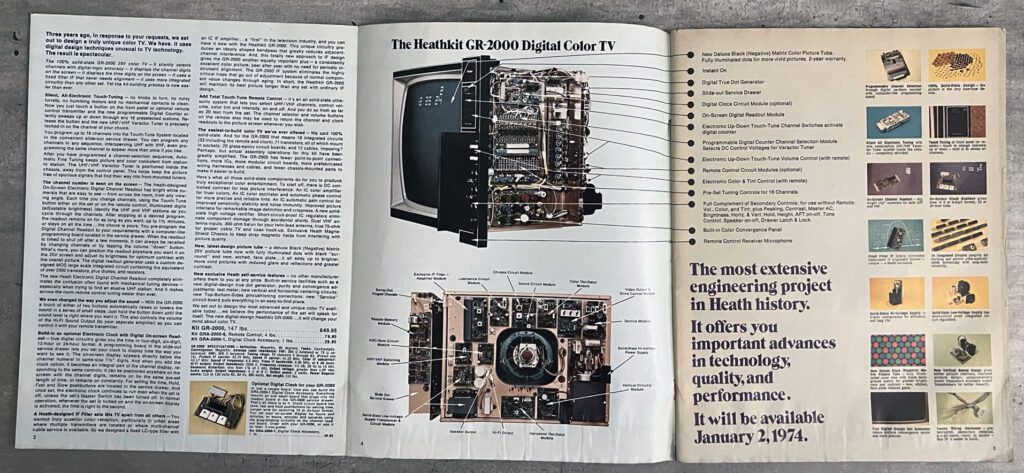
A friend of mine actually built the GR-2000 with his dad. It sat in their living room for a couple of decades. Regrettably, it eventually went to the recycle bin.
Occasionally, unbuilt Heathkit products appear for sale on eBay. They always command high prices. I’d spend a lot to get the GR-2000.
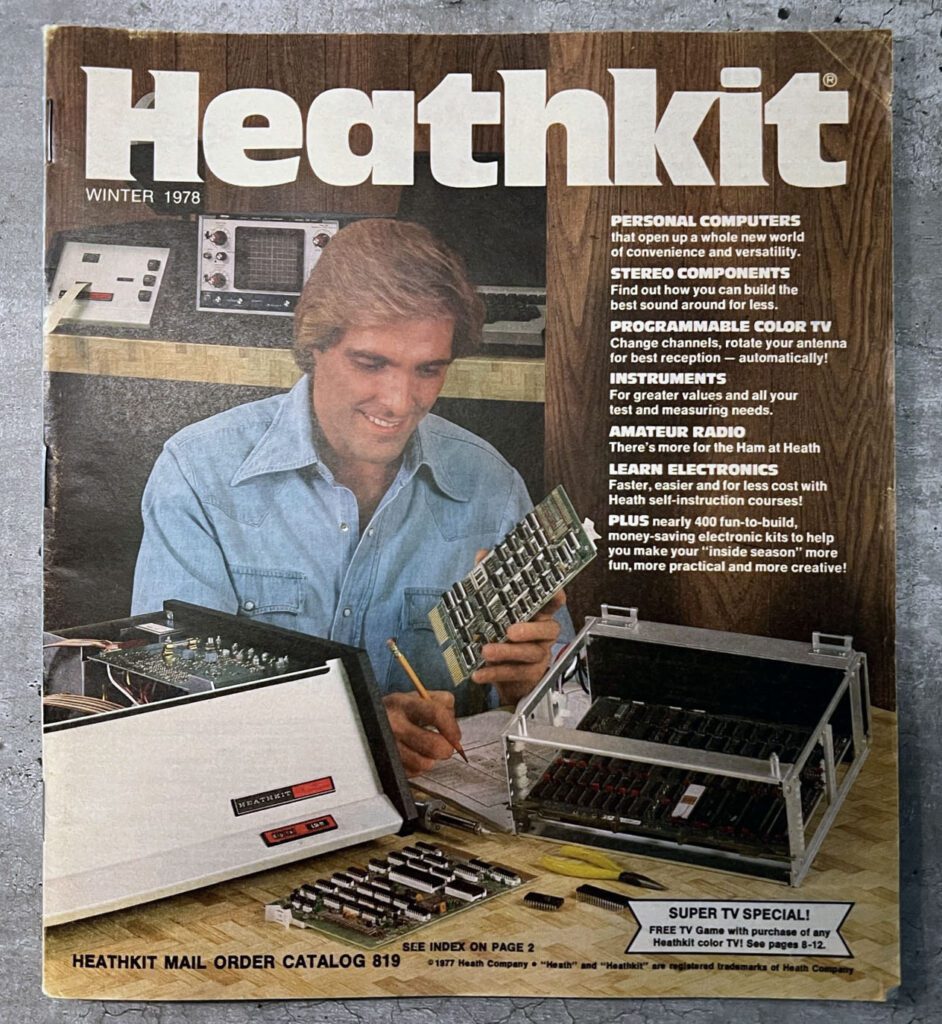
The other Heathkit product that I really wanted as the H8 computer. The H8 began shipping in the mid-1970s and offered a full range of peripheral equipment, including a paper tape reader and video terminal. Later additions include twin disk drives. The H8 ran “Benton Harbor BASIC.”
The big brother to the H8 was the H11, which ran DEC PDP-11 software.
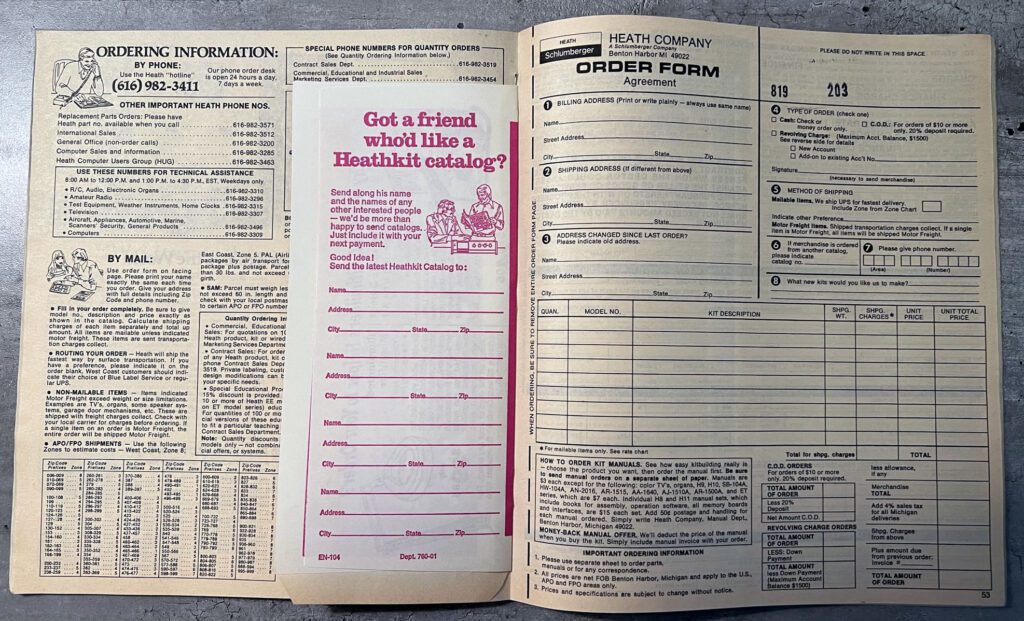
Remember the order forms? I do. That’s a blast from the past.
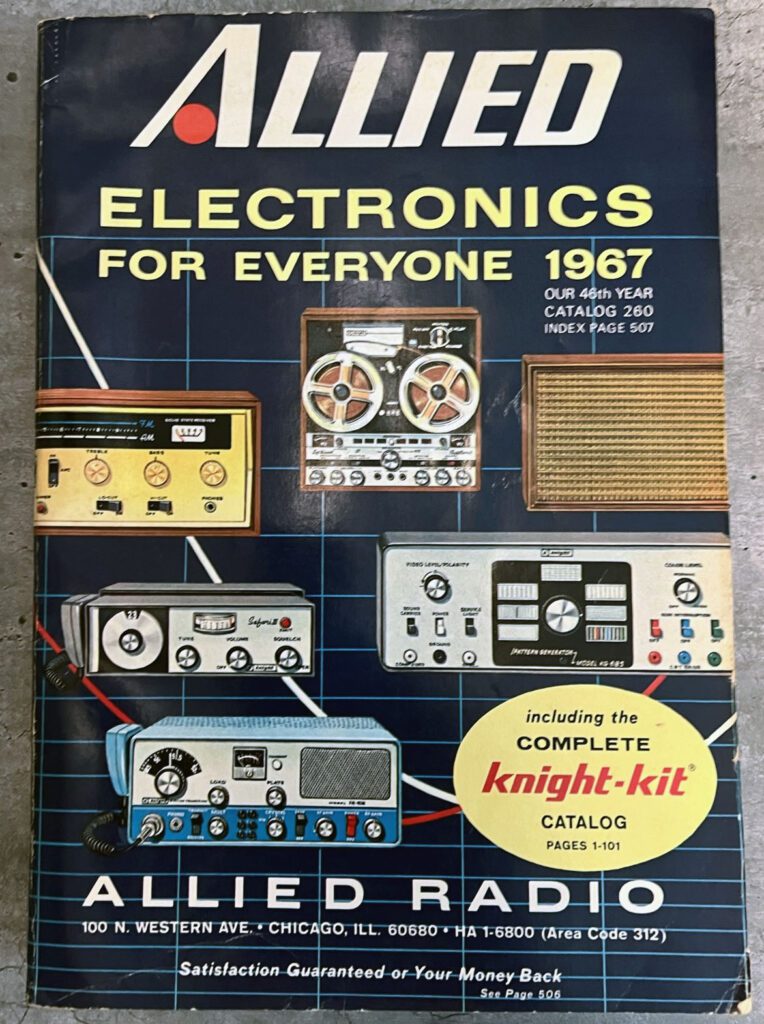
I started purchasing electronics components from Allied in the mid-1960s. The company offered two catalogs—one aimed at consumers and the other aimed at professionals. The consumer version is shown above. A key part of the Allied consumer catalog was a listing of Knight Kit products. Knight was a popular brand for many years. They offered a wide range of kits, from test equipment to radios.
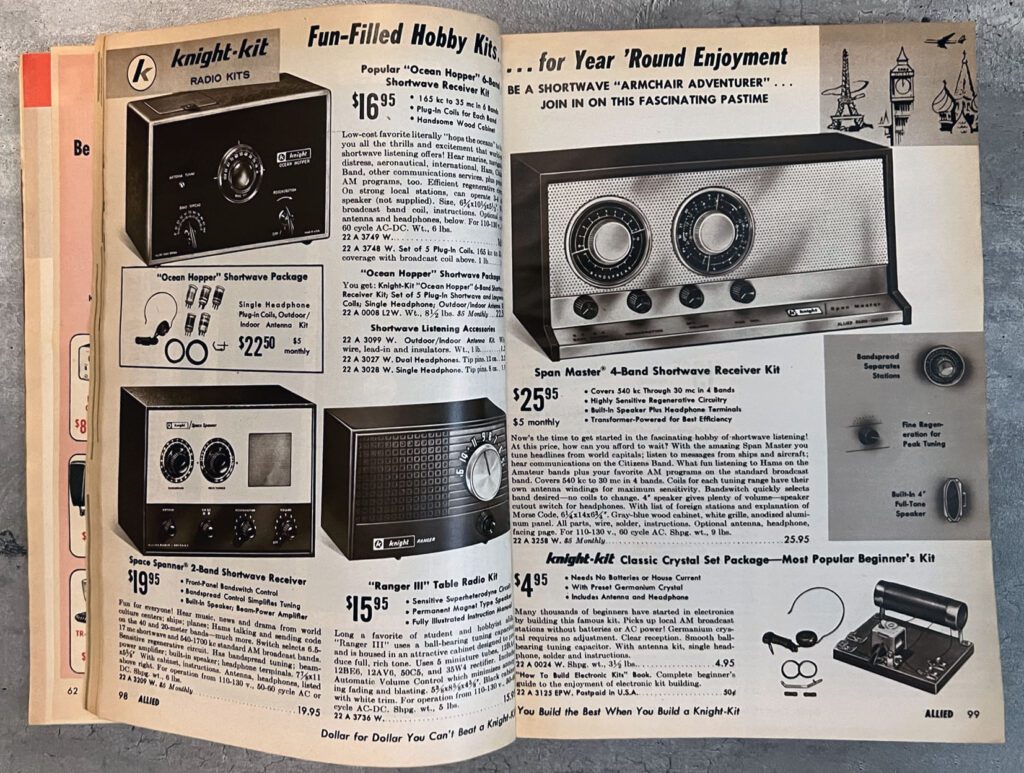
The shortwave radio shown on the right in the photo above is the first kit that I ever built (circa 1966). My dad helped me string a long-wire antenna in the back yard. I used that radio for years. The second kit that I built, again a Knight product, was a CB walki-talkie. Lots of fun!
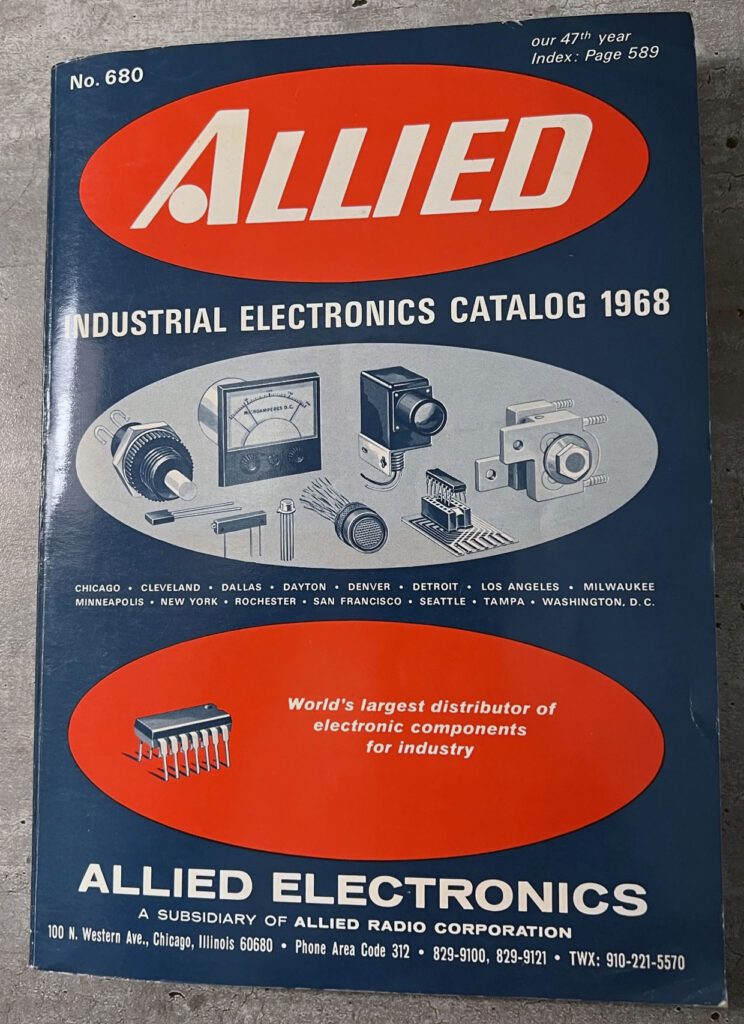
The other version of the Allied Electronics catalog was for industrial products (shown above). This one was aimed at professionals; no consumer products but lots of components of all types.
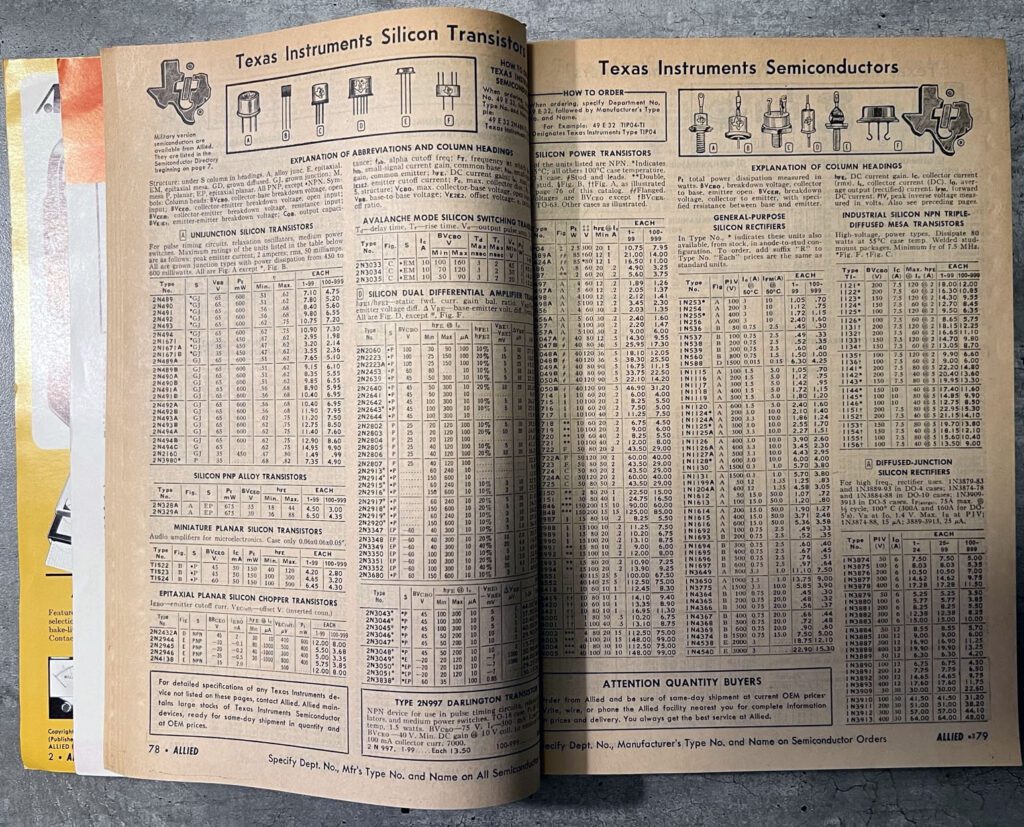
A surprising number of components in this 1968 catalog are still available. Others, sadly are not (e.g., some types of RF coils and transformers, and multi-gang potentiometers in a wide range of values). Oh well…
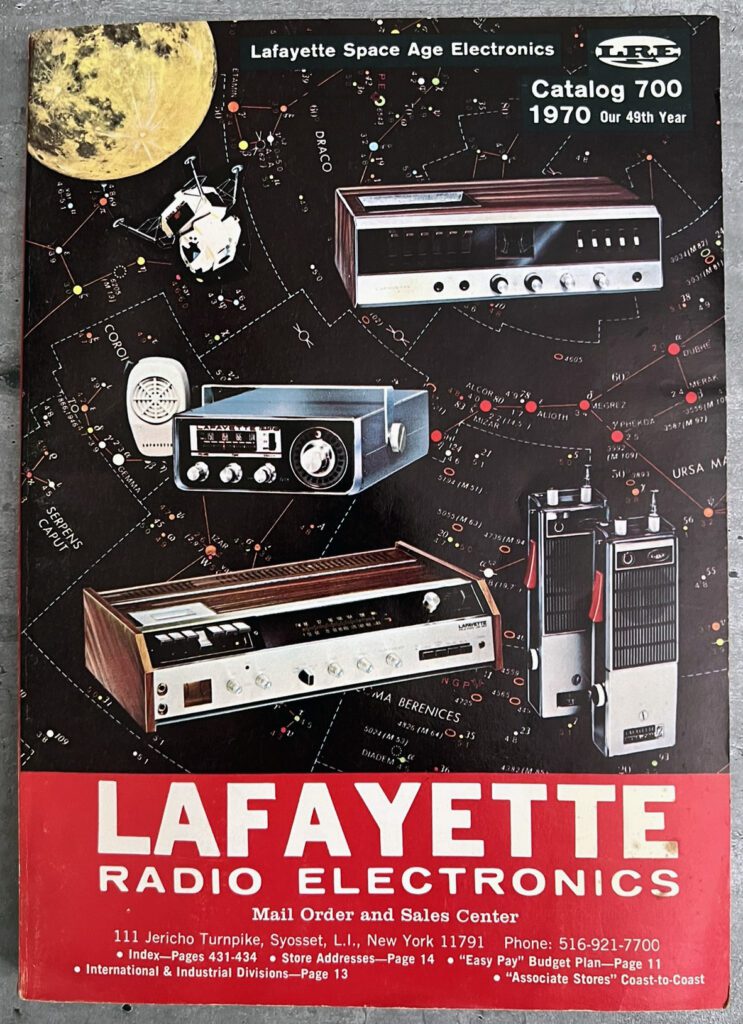
The other major catalog electronics retailer back in the day was Lafayette Radio. They had a wide selection of consumer products and electronics components. The catalog cover shown above is circa 1970.
Among the products I fondly recall is the Geniac Computer Kit, shown below. I also purchased and built the Analog Computer Kit (show on the same page). Three dials could be used to do basic math. Not particularly useful but nonetheless fun.
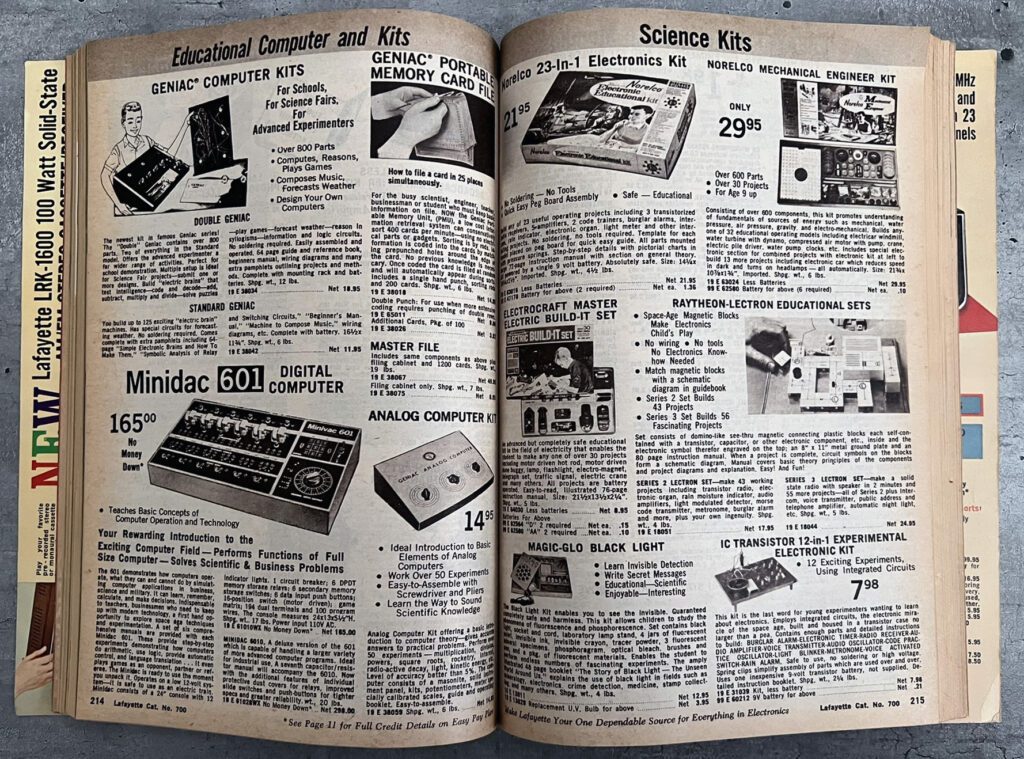
Another favorite product category from Lafayette was the selection of amplifiers and tuners shown below. I can remember working with several of these back when transistor-based circuits were a novel concept.
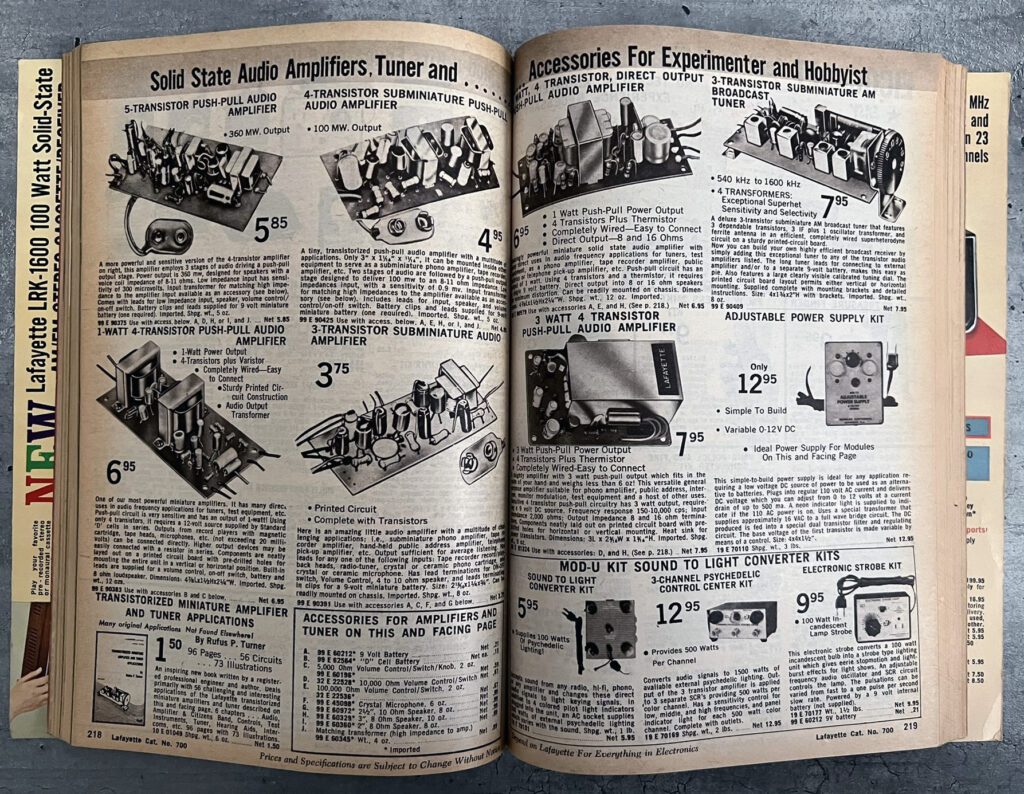
Readers of a certain age will remember that both Allied and Lafayette had brick-and-mortar stores in a number of cities. Heathkit had some as well. It was always fun to window-shop and plan for the next project. Sadly, that doesn’t exist today. Of course, back then we didn’t have the internet, so maybe it’s OK.
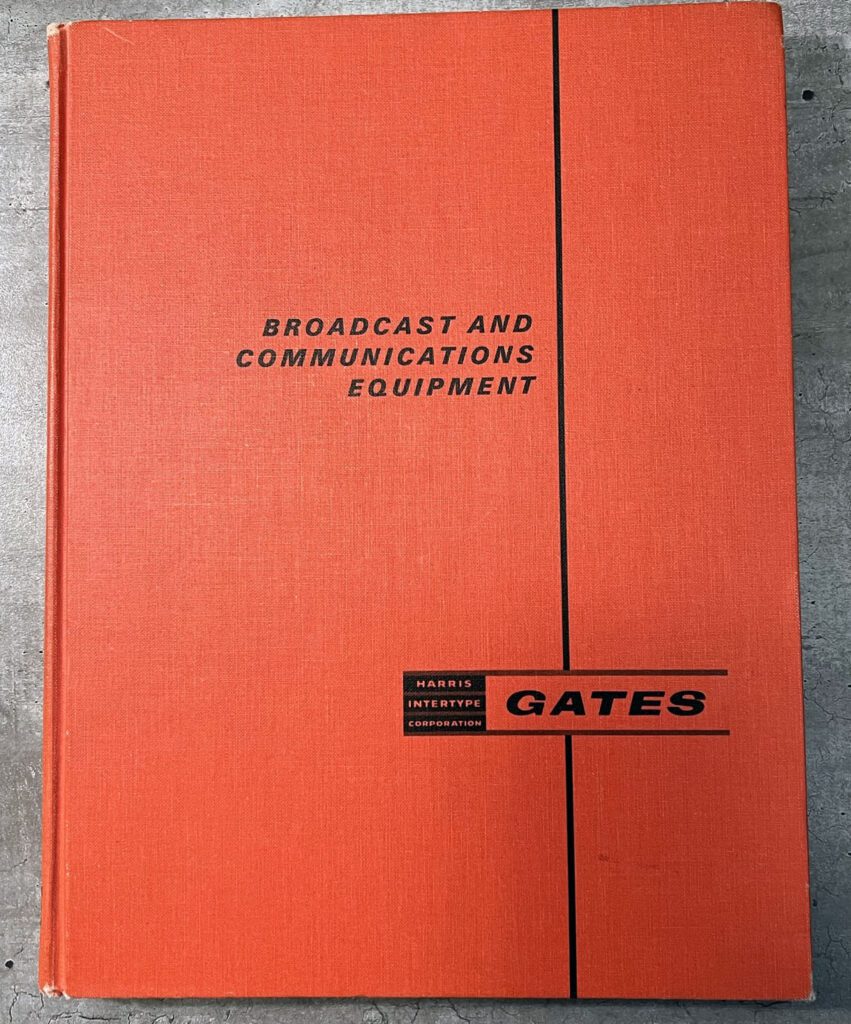
During my days in radio, selecting equipment for the new FM station we were building was a great experience, and a lot of fun. You could purchase an entire radio station from this catalog—and many stations did just that.
Most of the equipment at our station was from Gates. The primary exception was the FM transmitter, which was a Collins 831G-1.
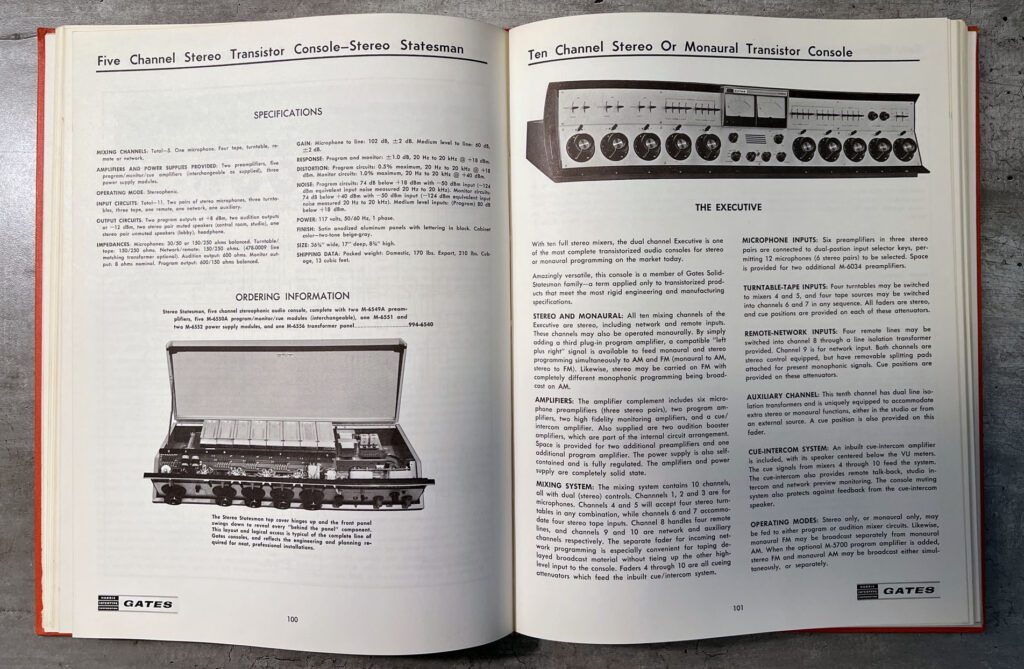
Featured prominently in the Gates catalog #98 (circa 1966) is the Executive console. It was the largest radio console in the book and one of the first stereo consoles produced by the company.
While catalog shopping was a great experience, I would certainly not want to go back to it. The Internet, for all its issues, is a really great way to but stuff!